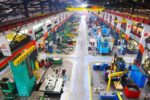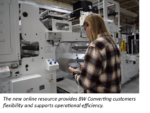Using AI to enable scalable, autonomous operations
By Troy Mahr, director – Kalypso. Kalypso – acquired by Rockwell Automation in 2020 – is a diverse team of consultants, innovators, strategists, data scientists and technologists. What we consistently hear from industry leaders is the need for real-time visibility across their global operations, which is key to ensuring their operations stay agile and scalable. However, achieving this isn’t possible without removing laggy manual data collection through the deployment of connected assets and contextualised data. By eliminating data silos and unlocking industrial data and artificial intelligence (AI) capabilities, companies can enable autonomous decision-making that optimises costs, efficiency, and production resilience. This moves their organisation closer to achieving autonomous operations. Autonomous operations are the manifestation of “self-governing” systems at every step of the manufacturing process. These systems derive their autonomy from data-led decision-making models that enable them to reliably adapt their behaviour in response to dynamic environments during operation without any manual intervention. Achieving autonomy across an enterprise requires capabilities that span the full intelligence spectrum, from observation and inference to decision-making and action. These capabilities are relevant across all operational areas, including product design, manufacturing, supply chain, distribution, direct-to-customer channels, and demand forecasting. Manufacturing operations, in particular, have seen progress through Model Predictive Control (MPC), which continuously analyses real-time and forecasted data to optimise process control within defined constraints. While MPC is a strong example within manufacturing, broader autonomy demands extending similar intelligent systems across the enterprise. This journey is captured in the industrial AI maturity pyramid, which outlines a progression from basic data integration and visualisation to predictive analytics, prescriptive decision-making, and ultimately, autonomous operations. As organisations climb this pyramid, they adopt machine learning, real-time automation, and self-learning systems. Each stage requires not just technological upgrades but also cultural and structural transformation. Asset Monitoring: Find Downtime Root Causes Looking at […]









